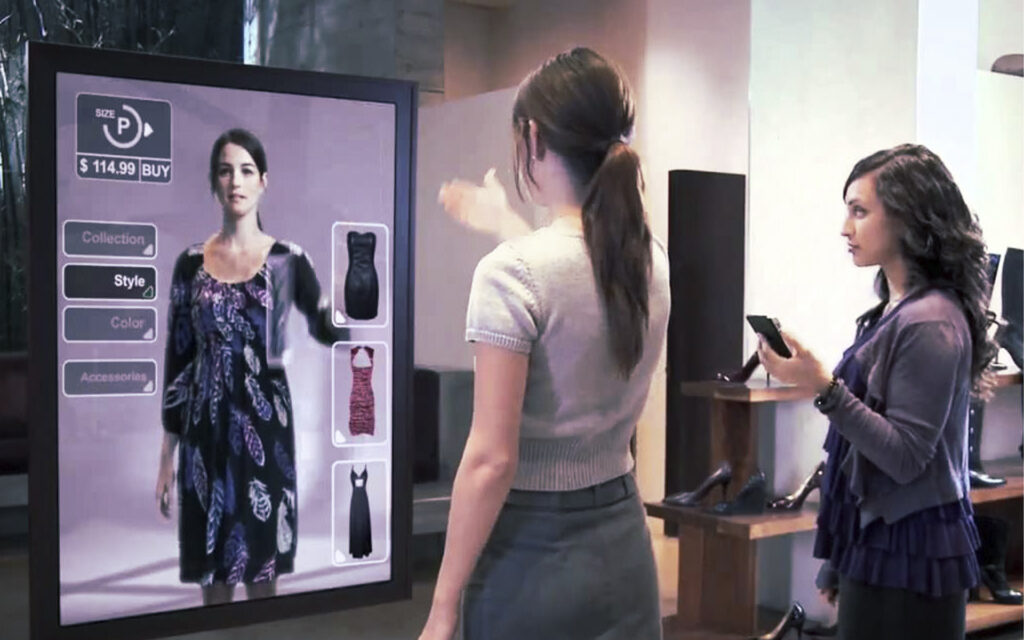With the growing concern about the environmental impact of the fashion industry, new technologies are emerging that will help with sustainability and the transparency of the sector.
According to a report by the State of Fashion, in 2021, fashion companies invested between 1.6 and 1.8% of their revenues in technology. By 2030, that figure is expected to increase by 3.0 to 3.5 percent.
In combination with new technologies, many fashion firms are taking a leap towards a more sustainable and circular business model, from the design and materials used to the manufacturing and recycling processes of their products.

Why is innovation important in fashion?
It has long been known that the fashion industry is one of the most polluting industries in the world due to its large environmental footprint.
And in the face of excessive consumption of natural resources, measures must be taken to transform this sector.
Implementing new technologies that create solutions to reduce the impact it has on the planet is one of them.
In addition, these technological trends play an important role in the consumer as they also improve the shopping experience.
The main technologies of today’s fashion
3D technology
Printing
This technology allows the creation of products from digital designs while minimizing manufacturing errors and waste of resources, such as reducing water consumption, and decreasing air and water pollution since no chemicals are used for their creation.
Although it takes many hours to produce each item, there is less textile waste by avoiding the overproduction of garments that will only be used a couple of times.
Many firms and designers are adopting this technology in their collections, such as Dutch designer Iris Van Herpen.

Sampling
Samples give designers and the purchasing team a representation of the product.
3D sampling allows a digital review reducing the costs associated with materials, time, and waste. Since there is no physical production, the carbon footprint gets smaller.
Brands such as Tommy Hilfiger and Calvin Klein are already designing in 3D using Stitch. It is an application made by a startup that seeks to scale up digitalization throughout the whole value chain, from design to sales.
Artificial Intelligence (AI)
According to Oracle, AI refers to systems or machines that perform tasks mimicking human intelligence and can iteratively improve by the ability to collect information continuously.
These tasks can involve skills such as pattern recognition, prediction, optimization, and recommendation generation, allowing it to improve the forecasting of demands, knowledge, and anticipation of the consumer’s expectation, and optimizing chains, supply, and stock.
In addition, it offers users personalized shopping experiences as virtual assistants allow them to try on clothes virtually.
By using 3D tracking software to scan body shapes, and AI-based motion predictors to reflect physical experience, the amount of unused clothing sent to landfill or incineration can be dramatically reduced, as well as the real, embedded energy consumed in transporting and processing unwanted items.
Ellen MacArthur
Virtual Reality and Augmented Reality
Virtual reality creates completely simulated images and spaces, combining the physical and digital worlds.
It allows consumers to try on garments virtually, thus reducing the amount of returned items and decreasing textile waste generated by overproduction.
Augmented reality is a technology that allows you to visualize the real world with digital objects.
DRESSX is an augmented reality digital fashion store that measured the impact of a digital garment versus a physical one and determined that the production of a digital item of clothing emits 97% less CO2 and saves 3300 liters of water.
In 2021, the luxury brand Gucci launched digital sneakers that allow its customers to try them virtually, without going to the store.

Blockchain
This technology allows consumers to fully track the production cycle of a garment, from design to sale, ensuring transparency and traceability.
As this information cannot be manipulated, it helps avoid greenwashing.
Technological innovations in mobile applications
The purchase or resale of products through second-hand mobile apps helps promote circular fashion and reduce the carbon footprint.
Fashion apps like Good on You foster sustainability and transparency in the industry by enabling consumers to make informed choices.
Alternative textiles
The materials and fibers commonly used in the production of garments are major contributors to pollution and resource consumption, and many degrade slowly.
The development of alternative textiles helps reduce that negative impact. These are some of the alternatives that can be found:
- fibers created from orange peels (Orange Fiber), ground coffee (S. Coffee), and non-food milk (QMILK);
- fibers developed from wood pulp (Tencel);
- silk fibers extracted from spider webs (Microsilk);
- recycled fibers (Polylana / Evrnu);
- leather made from pineapple leaves (Piñatex);
- leather made from mushrooms (Muskin / MycoWorks);
- leather made from the skin of apples (Savi Collection).
These new types of textiles, produce less waste during the production stage and are durable, biodegradable, recyclable, regenerative, and reusable.
The designer Stella McCartney, one of the pioneers in sustainability and ecological responsibility, uses alternative materials such as Alter Nappa or Mylo™ in her products.
Hermes partnered with MycoWorks to manufacture its iconic Victoria bag from mushroom mycelium. Gucci, in its circular line Off The Grid, uses recycled, organic, biomaterial, and sustainable sources.
The future of fashion
New technologies are leading the fashion industry towards sustainability, helping to reduce the environmental footprint, optimizing production, minimizing waste, and reducing unnecessary emissions.
While technological innovation has the power to systematically change this industry, it is not the only one with the capacity to make changes.
Legislators must create laws that pressure companies to be more ethical, and we as consumers, through our actions and habits, we can contribute to that change too.





